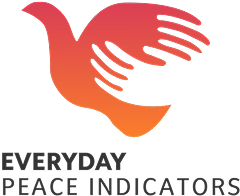How can you use the EPI approach?
Home / How can you use the EPI approach?
Everyday indicators, gathered from community experiences, provide valuable insights that can shape policies, programs and community initiatives. Local and national governments can use this data to plan projects that directly address what matters most to people. Community organizations can create more effective programs tailored to local needs. Schools can use this information to design activities that connect with students’ real lives and electoral candidates can build platforms that reflect the key concerns of their communities.
Design with the EPI approach
The EPI approach integrates lived experiences and community voices directly into program design, ensuring that initiatives reflect local priorities. Everyday indicators guide organizations to identify key challenges and adjust their strategies to better align with community needs. These insights are crucial for shaping programs that span areas such as employment, infrastructure, education and conflict resolution.
By using everyday indicators to inform and evaluate peacebuilding initiatives, programs have a greater chance of success and sustainability.

By using everyday indicators to inform and evaluate peacebuilding initiatives, projects have a greater chance of success and sustainability.
Project Examples

SCORE Program Design in Sri Lanka
Evaluate with the EPI approach
The EPI approach helps ensure programs stay aligned with community needs. Everyday indicators—defined and tracked by community members—become the measures of success. This participatory method shows real impact from the perspective of those most affected, making outcomes more relevant, effective and sustainable.

Our participatory evaluations measure success through the lived experiences of communities, ensuring that the results reflect their realities and priorities.
Project Examples

SCORE Program Evaluation in Sri Lanka

IAF Project Evaluations in Colombia
Engage communities with the EPI approach
The EPI approach makes communities active partners in research and change. People define their own indicators of peace, highlighting local priorities, sharing experiences and taking collective action. Instead of storing data in reports, EPI shares findings in accessible formats like exhibitions, meetings, workshops and summaries.
Photovoice is one way EPI brings indicators back to communities. This participatory method empowers people to express their perspectives through photography and writing. Citizen photographers document daily life, creating images that reflect the meaning behind their indicators. These photostories are exhibited in public spaces to spark conversations about local needs and hopes for peace.
Photovoice challenges traditional photography by involving communities in curating and displaying images in everyday settings. This visibility fosters pride and ongoing dialogue.
The indicators also inspire community action. In Sri Lanka, a community identified a playground as a everyday sign of peace. Local groups responded by improving the space so children could play safely.

Our participatory evaluations measure success through the lived experiences of communities, ensuring that the results reflect their realities and priorities.
Project Examples

Returning Data to Communities in Colombia

Photostories in Colombia, Mostar and Oakland

Artisan Well in San Jacinto, Montes de María in Colombia
Innovate with the EPI approach
The EPI approach brings lived experience into policy design. Everyday indicators reveal barriers to peace or reconciliation and show where government action—or inaction—is holding back progress. This community-driven method highlights where changes in policy, funding or public services are needed.

By listening to and understanding lived experiences, we gain deeper insights into how peace manifests in daily life and can inform policy with community perspectives.
Project Examples

